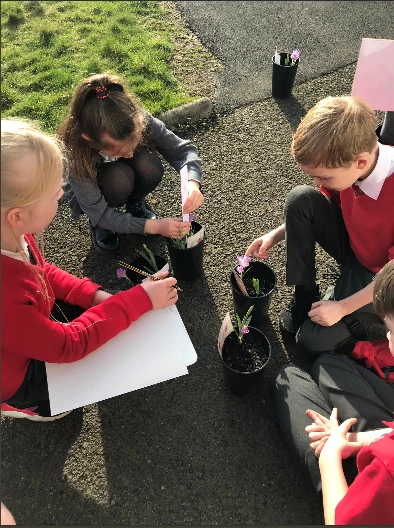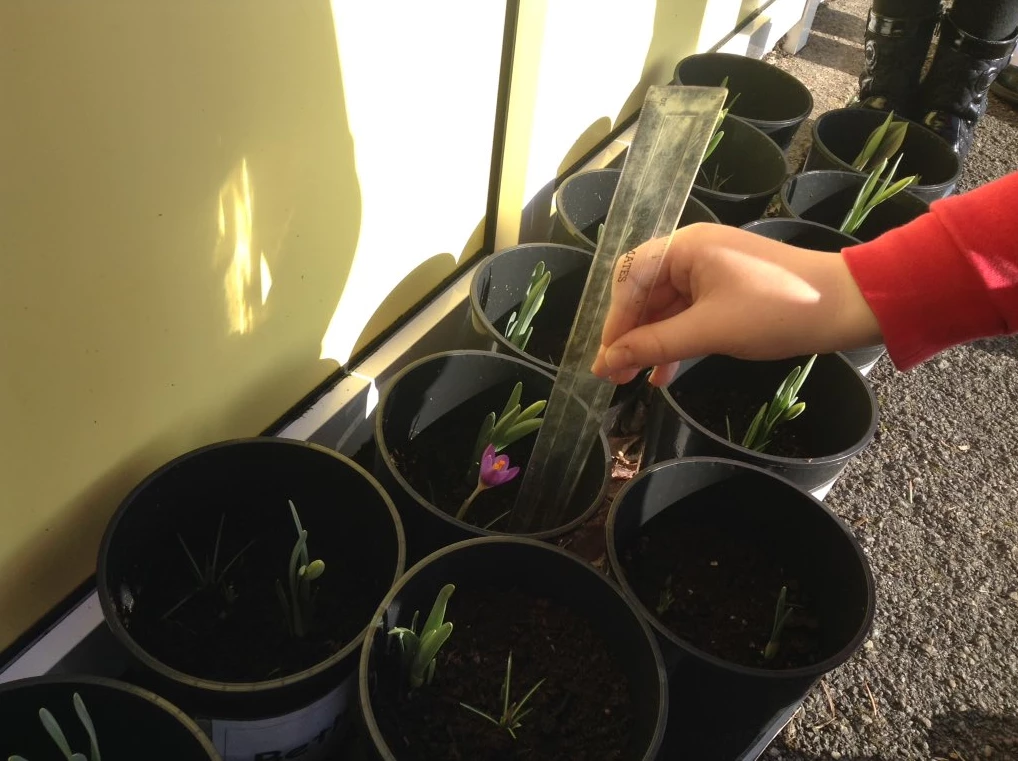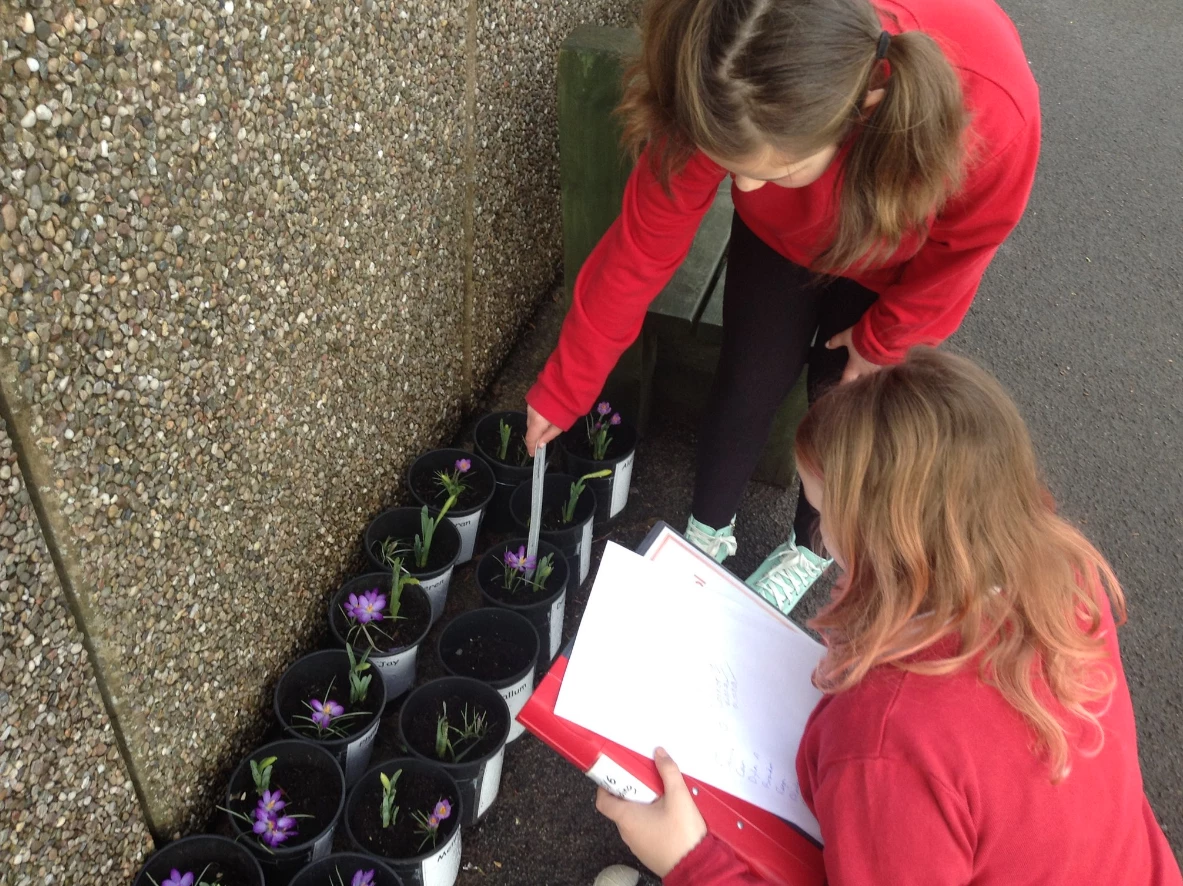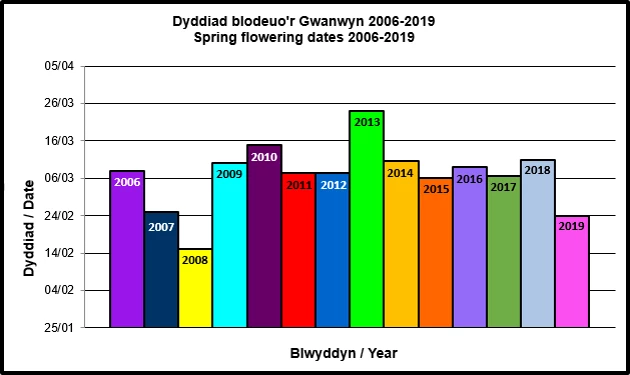Why we collect flower data
, 24 February 2020
Hello Bulb Buddies,
I hope that you have had a good half term. Have any of your plants flowered over the holidays? Remember to enter the date your plant flowers and the height of your plant in mm to the website. We ask for the flowering date for every single plant to be entered, these are then used to work out the average flowering date for your school.
Schools that are taking part in the Edina Trust Extension Project are also asked to note whether each daffodil record they enter is from a bulb planted in the ground or in a pot.
We talk a lot about the weather records you take each week, but the flower records are just as important. We are investigating how changes in the weather effect the flowering dates of spring plants. To do this we need to be able to compare flowering dates for each year the investigation has been running.
The bar chart below shows the average flowering dates for spring plants in Wales since 2006. You can see from the chart that 2019 saw the earliest flowering dates since 2008. Do you think our plants will flower earlier or later this year Bulb Buddies?
Average flowering dates for Wales 2006-2019
The bar chart below shows the average flowering date for each country in 2019. You can see from the chart that plants flowered earliest in Northern Ireland and latest in Scotland. Do you think we will see the same pattern this year Bulb Buddies?
Average flowering dates 2019

Watch your plants closely over the next few weeks. Last year the average flowering dates for crocus was 22 February.
It’s fascinating to see how your plants change over time. There are activities on the website about the life cycle of plants: https://museum.wales/spring-bulbs/
Remember to share your photos with me Bulb Buddies.
Professor Plant






